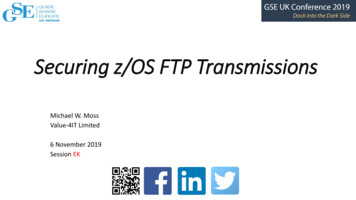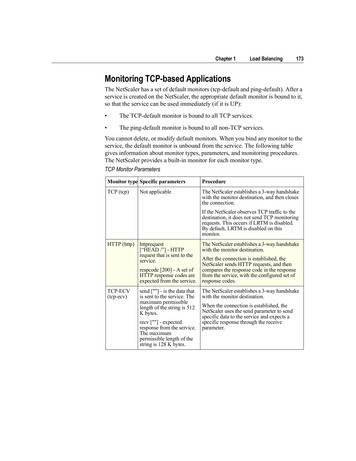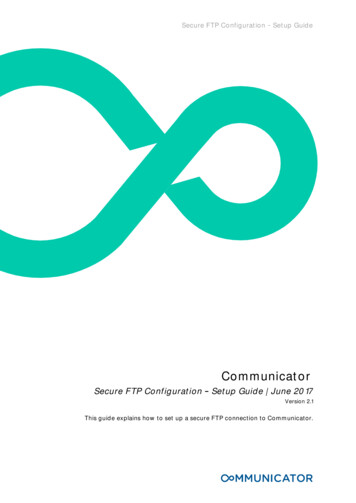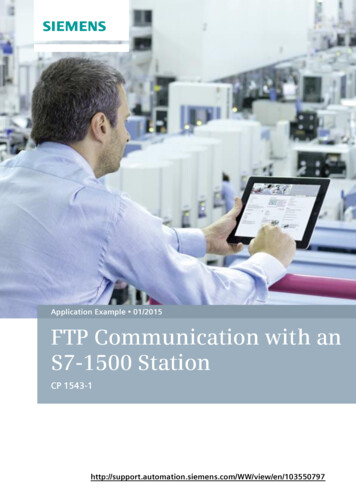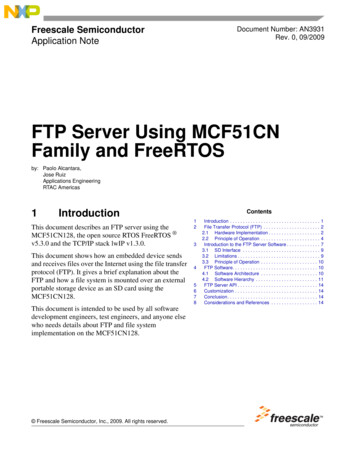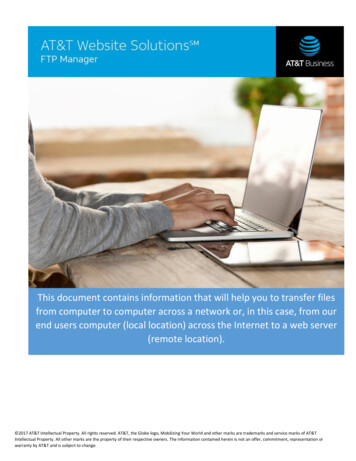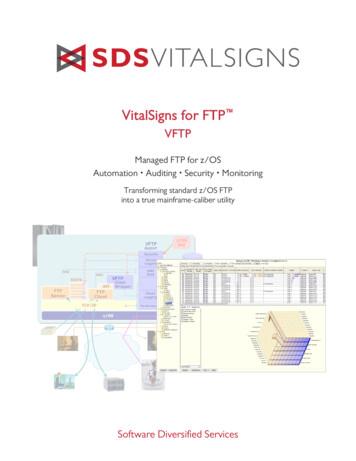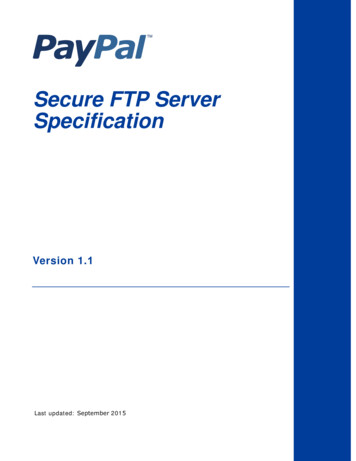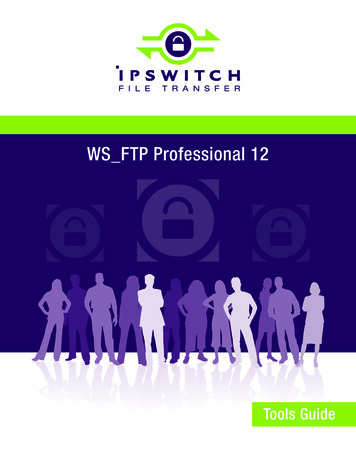
Transcription
FTP It is a client-server application. FTP is a standard mechanism provided by TCP/IP for copying afile from one host to another. It establishes two connections between hosts First for data transfer Second for control information (commands and responses) Separation of commands and data transfer makes FTP more efficient Control connection uses very simple rules for communication,while data transfer uses complex rules due to the variety of datatypes transferred.
FTP uses the services of TCP. It needs twoTCP connections.The well-known port 21 is used for thecontrol connection and the well-knownport 20 is used for the data connection.
Basic Model of FTP Client has 3 components - user interface, client control process and clientdata transfer process and the Server has 2 components - server controlprocess and server data transfer process. Control connection is made between the control processes and remainsconnected during the entire interactive FTP session. Data connection is made between the data transfer process and connectionis opened and closed for each file transfer
ConnectionsTwo FTP connections, control and data, use different strategies anddifferent port numbers.1. Control ConnectionTwo steps1. Server issues a passive open on the well-knownport 21 and wait for a client connection.2. Client uses an ephemeral port and issues anactive open command Connection remains open during the entire process.The service type used by IP protocol is minimizedelay because this is an interactive connectionbetween a user and a server.
Opening the control connection
2. Data ConnectionDataConnection3 steps:1. Client issues a passive open using ephemeral port. Clientinitiates this connection, since client issues the commandfor file transfer2. The client sends his port number to the server using thePORT command3. The server receives the port number and issues an activeopen command using the well-known port number 20 andthe received ephemeral port number
Creating the data connection
Communication FTP client and server runs on different type of computers an FTP uses two different approaches to resolve this problem One for control connection One for data connection
Communication over Control Connection It uses NVT ASCII (Network Virtual Terminal )character setCommunication is achieved through commands and responsesOne command or response is issued at a time over this connection.Each command or response is only one short line and each line isterminated with two character (carriage return and line feed) endof-line token.
Communication over Data Connection Files are transferred through data connectionClient must define the transferring file’s type, the structure ofdata, and transmission modeAll these information will be transferred prior to transfer actualdata
1. File Types ASCII file: Default format for transferring text files. Eachcharacter is encoded using NVT ASCII. EBCDIC file: if one or both ends of the connection useEBCDIC encoding, the file can be transferred using EBCDICencoding. Image file: Default format for transferring binary files. Filewill sent as continuous stream of bits without anyinterpretation or encoding
ASCII and EBCDIC file type uses another attribute to define theprintability of filea. Nonprint Default format for transferring text file Format is used for files that will be stored and processedlaterb. TELNET Format of the file contains NVT ASCII vertical characterssuch as CR, LF, NL, VT(Vertical Tab). The file is printableafter transfer.
2. Data Structure File Structure (Default) – The file has no structure. Itcontains continuous stream of bytes Record Structure - File is divided into records. This canbe used with text files. Page Structure - File is divided into pages. Each page willhave a page number and page header. Pages can be storedand accessed randomly or sequentially
3. Transmission Mode Stream Mode (Default mode) - Data is delivered from FTP to TCP ascontinuous stream of bytes. TCP is responsible for chopping data intosegments of appropriate size. No end of file information (file structure),hence closing of data connection is end of file. In record structure, eachrecord will have a 1byte end-of-record character and 1byte end-of-filecharacter at the end of file Block Mode - Data can be delivered from FTP to TCP in blocks. Eachblock will preceded by 3byte header. First byte is Block description andnext two bytes define the size of block in bytes Compressed Mode - Compressed when file is big. Use run-lengthencoding for compression
File Transfer File transfer occurs over data connection under the control ofthe commands sent over control connection File transfer can be any of the three things File is to be copied from server to client. It is calledretrieving a file. It is done under the supervision of RETRcommand File is to be copied from client to server. It is called storing afile. It is done by using STORE command A list of directory or file names is to be sent from server toclient. It is done using LIST command. (List of directory orfilenames are treated as a file)
File Transfer
Default format for transferring text files. Each character is encoded using NVTASCII. EBCDIC file: if one or both ends of the connection use EBCDIC encoding, the file can be transferred using EBCDIC encoding. Image file: Default format for transferring binary files. File will sent as continuous stream of bits without any interpretation or .
